Chip ‘n Dale: Rescue Rangers is a film for no one. The film is interested in neither its source material nor anyone who would have liked said material, embarking on a vain quest for reinvention.
The last ten years of tentpole filmmaking have taught us thoroughly the profits and pitfalls of nostalgia. It’s an inducement to the theater offering the seduction of remembered pleasures and a trap that forces filmmakers into narrow quasi-religious recitations of the remembered text where any deviation invokes cries of heresy.

However, in an expanding entertainment multiverse where content (for now) has more and more of a premium while the rate and fear of failure grow exponentially, that lure has become irresistible. So studios and filmmakers continue to dive in, looking for some sort of creative outlet even as they attempt to mitigate risk with well-worn faces.
Forget the camel and the eye of the needle; it’s the gap between recognizable IP and fresh takes on old material that is impossible to thread. Everyone hopes for success, of course, a new masterpiece that manages to be both respectful to the original while casting a new light on it.
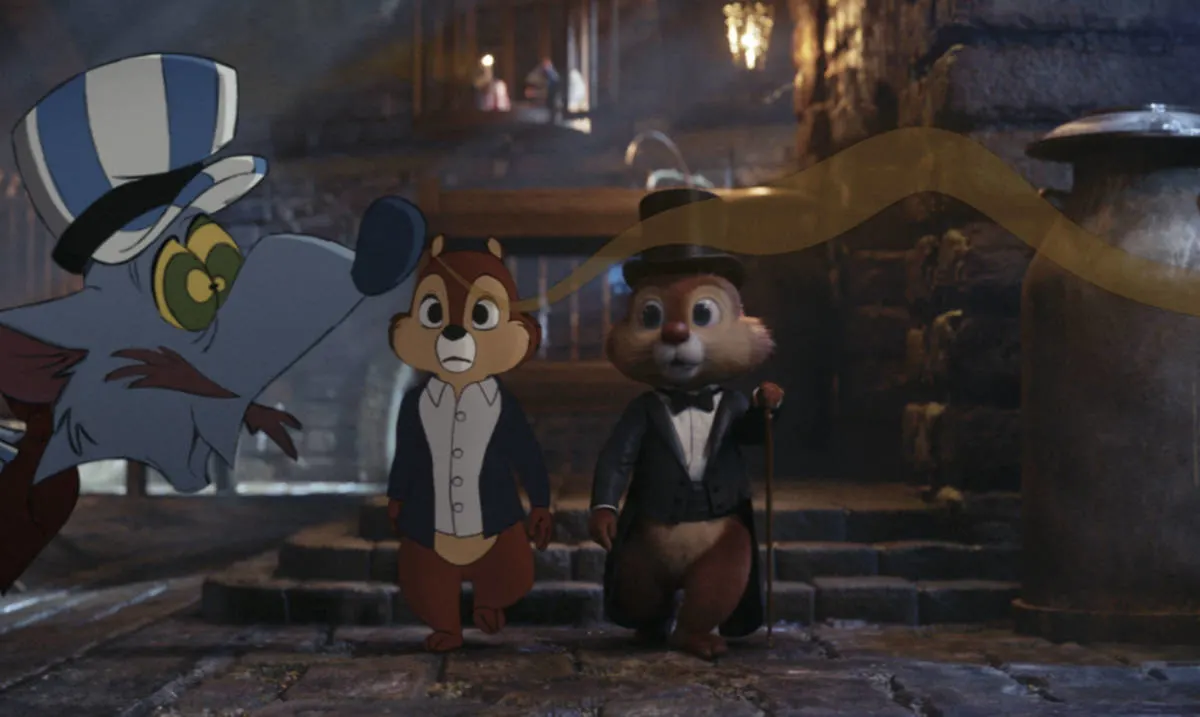
What we usually get is the dreaded “new take on old material,” which misunderstands both the audience for the original and what a new audience who’d never heard of the original might want. What we usually get is something like Chip ‘n Dale: Rescue Rangers.
The original Chip and Dale were classic Disney supporting characters: cute, speed-talking woodland animals frequently forced to outwit some obnoxious barbarian who had the temerity to invade their sanctums. Small, squeaky Bugs Bunny-types with a penchant for physical comedy. When that round of success wore off, they were re-invented for the first time as a pair of small furry crime fighters in the more or less fondly remembered (when it is remembered) Chip ‘n Dale’s Rescue Rangers, one of Disney‘s ubiquitous afternoon cartoons of the late 1980s.
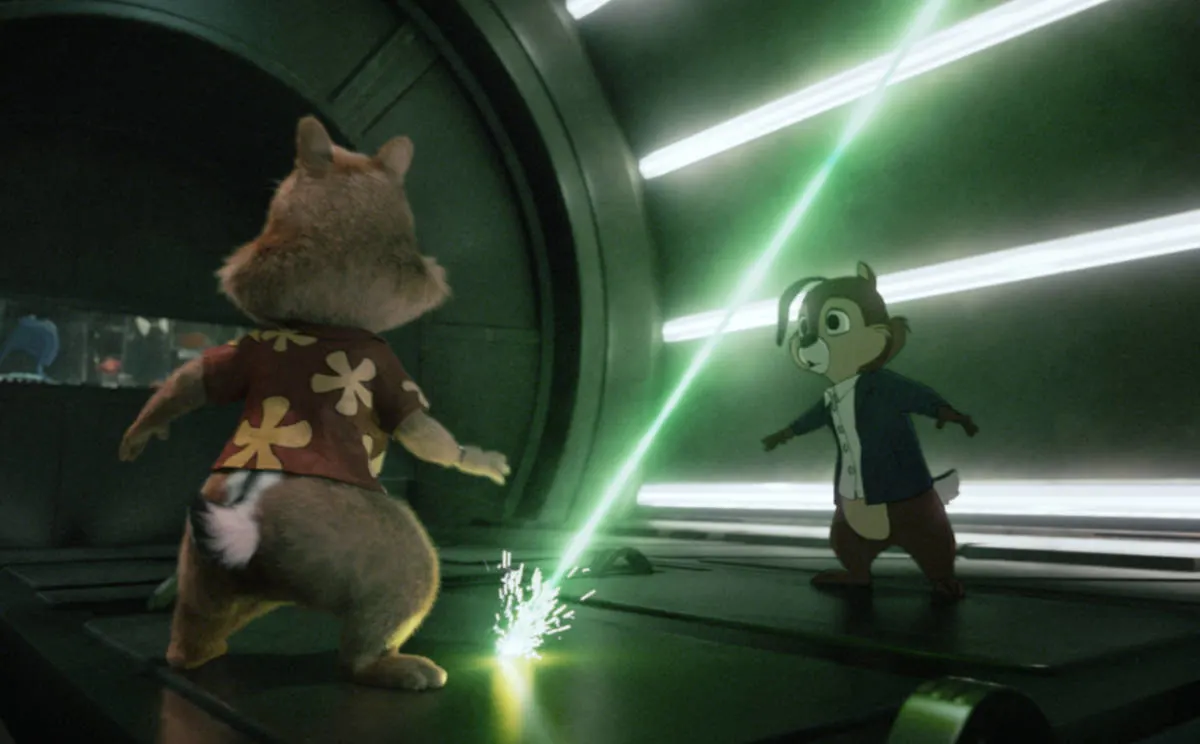
Or so we thought. It turns out Chip (John Mulaney) and Dale (Andy Samberg) were actually small woodland animal actors in a world where animated characters, puppets, and other kids show riff-raff live hand in hand with people; a Roger Rabbit nightmare come to life and run amok. Here, Rescue Rangers was a successful TV show they starred in for several years alongside cartoon crimefighting comrades Monterey Jack (Eric Bana), Zipper (Dennis Haysbert), and Gadget (Tress MacNeille) until Dale’s greed for fame and success led him to exchange the ensemble for a shot at his own starring vehicle.
Instead, the show falls apart without Dale (whose own pilot goes nowhere), and everyone ends up in some version of the Hollywood-after-success story. Chip quits the business to sell insurance, Dale hocks Rescue Ranger memorabilia while chasing after a return to stardom (going so far as to have himself converted to three-dimensional CGI), old pal Monterey Jack falls down the rabbit hole of addiction to cheese, etc., etc.
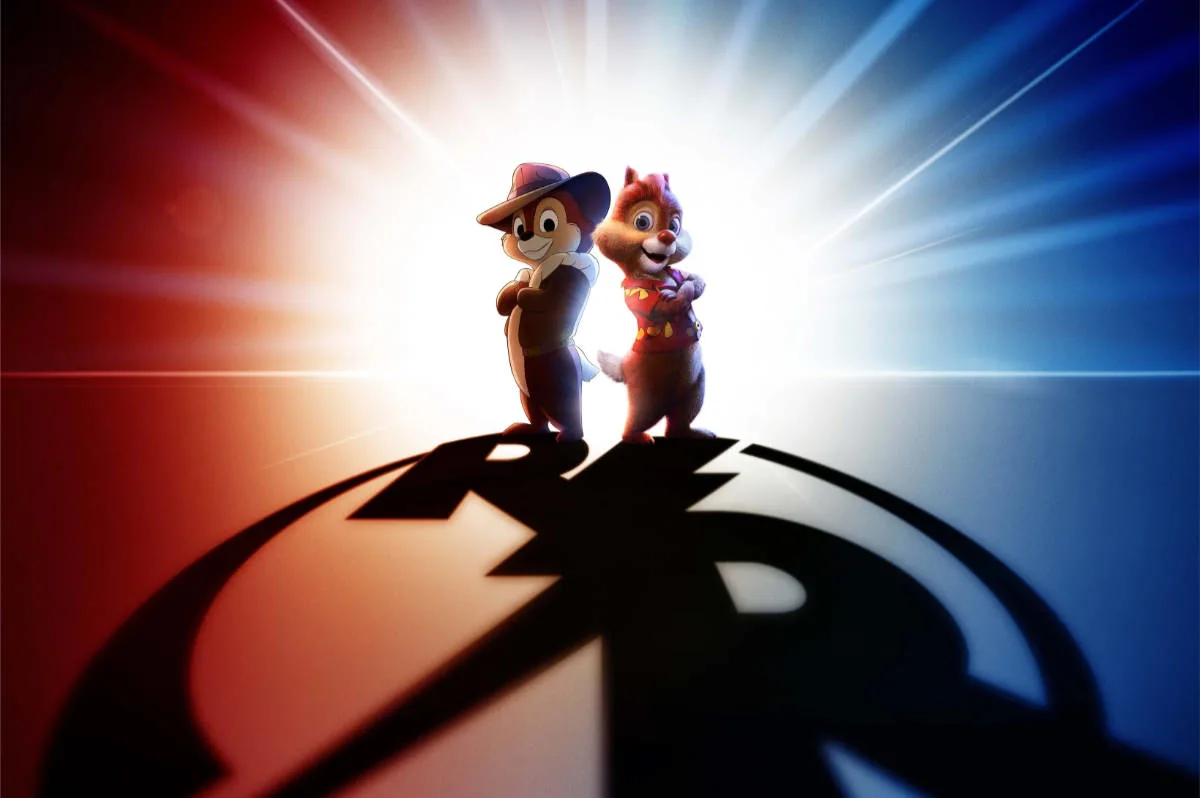
When Jack goes missing, Dale discovers something has been happening to old, which has been toons no one cares about. Dale does care, though, and with the help of his old friend Chip, he’ll find the missing characters and maybe his way back on top while he’s at it.
That passing nod to the Chip and Dale of old is all there is of the old, a taste to either satisfy the studio executives that there is some tangible element with a track record they can model the likelihood of success against or the flash of something remembered from Generation X’s childhood they can grab momentary attention with. Or both (probably both). But a taste is it, before yanking the scales from our eyes to feast on a smorgasbord of references so vast and uninterrupted it would make Seth MacFarlane think twice about including them all.
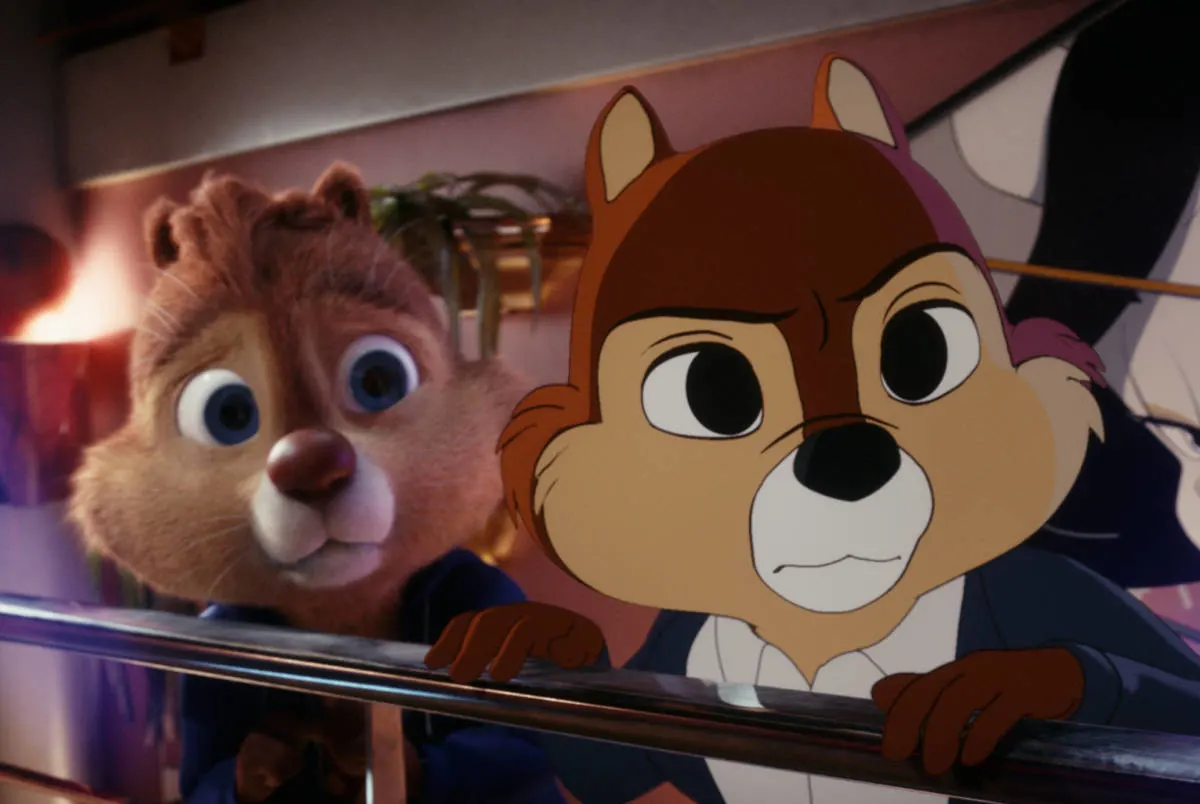
From the original model of the CGI Sonic the Hedgehog (fired for being ‘Ugly’ Sonic) to a poorly animated Viking from the early days of computer graphics (Seth Rogen) who has to work as a bouncer because his face is unnerving and doesn’t look directly at anything, Chip ‘n Dale is replete with references to the reality of Hollywood production that means a lot to anyone working there or spending a lot of time on making-of videos and director commentaries, but not as much to anyone else.
None of which screams ‘funny cartoon animals.’ It’s telling how little it matters who director Akiva Schaffer and Co. picked to focus the narrative on that almost as much attention is paid to the various cameo characters and in-jokes Chip and Dale meet along the way as the star duo themselves.

Samberg and Mulaney play their respective rodents as animated versions of their normal screen personas: Dale is a happy-go-lucky narcissist only semi-aware of the chaos he leaves in his wake, while Chip is stuck as a button-down straight man commenting on Dale’s lunacy even as he goes along with it. They may as well have just been themselves on screen and given up on the animated patinas because it really is only the backdrop they need. For Chip ‘n Dale it is only the world that matters, none of the characters. They are backdrops to the sight gags Schaffer stuff Rescue Rangers with.
There, comparisons to Who Framed Roger Rabbit are unavoidable and intentional because Rescue Rangers can only think about film in terms of references to something else. The jokes are all about recognizing the origin of the reference but not at all about understanding them. Inevitably Chip and Dale end up in the film’s own version of Toon Town, this one teeming with cute cartoon dogs who smuggle weapons and Muppet cheesemakers with connections to drugs and organized crime.
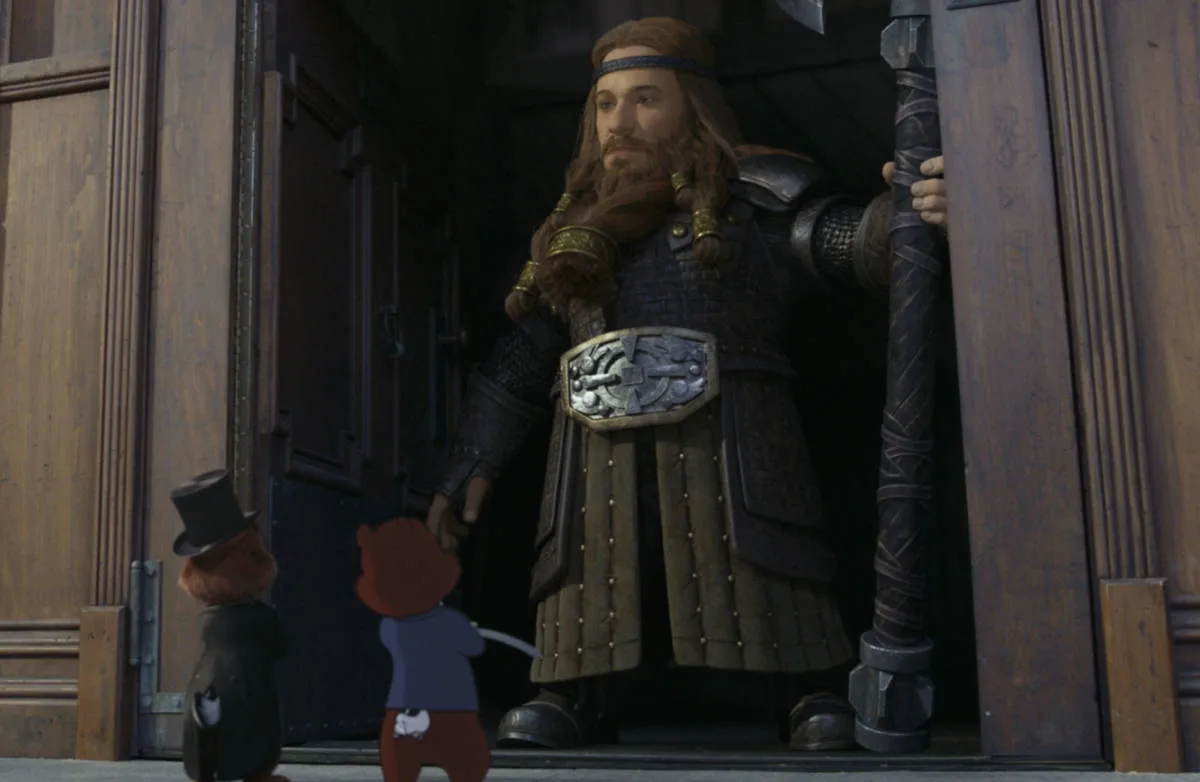
It’s less funny than it is pathetic without realizing pathos is not a good fit for the goofy Disney cartoon comedy. Roger Rabbit worked because the cartoons continued to act like cartoons even when in adult situations; it was clearly a fan of the thing it was parodying. The Rescue Rangers act like adults even when in cartoon situations, and the juxtaposition is more off-putting than funny.
Maybe, we think, it would have been better to produce on its own, shorn of the nostalgic gossamer and rendered strictly as itself. The Lonely Island boys know better, though. That way lies a Happytime Murders-level disaster. So, instead, we get this. On the other hand, without this, we would never have gotten to hear Post Malone perform the old Rescue Rangers theme song, so there is that.
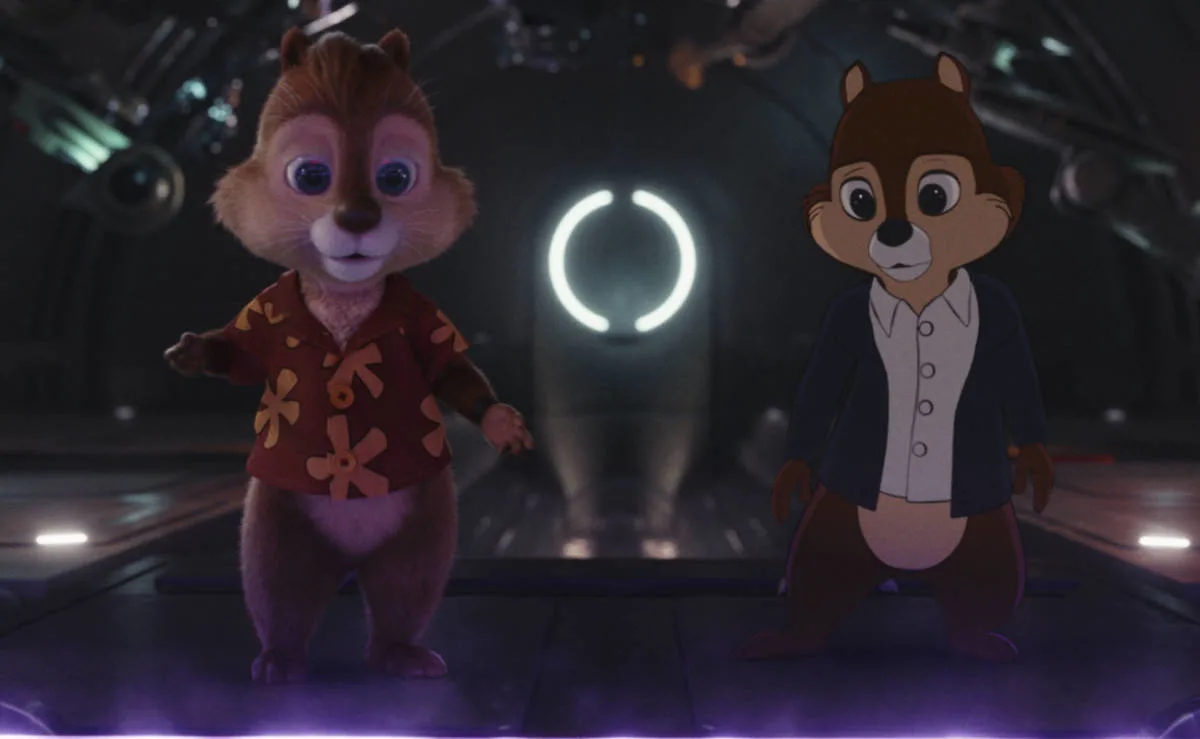
But none of that answers the question (because no one can): who is this for? Old fans nostalgic for their childhoods won’t get that or anything, young children who could become new fans of the old thing will be bored by the more adult comedy Rescue Rangers is offering, and adults who would like what the Lonely Island is putting down will be turned off by the childish patina covering it.
The Venn diagram of adults who remember the ’80s but have no fond memories of it or Hollywood animation and are looking for someone to deconstruct both is very small and should be a continual warning to anyone who ever says, “We have this property. We’re looking for a new take on.” Since we’re still busy remembering the ’80s, maybe we should take the time to internalize another one of its sacred texts: “The only way to win is not to play.”
CHIP ‘N DALE RESCUE RANGERS REVIEW SCORE: 3 OUT OF 10
Rated PG for mild action and rude/suggestive humor, the film is now streaming on Disney+.
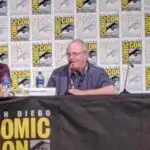
Joshua Starnes has been writing about film and the entertainment industry since 2004 and served as the President of the Houston Film Critics Society from 2012 to 2019. In 2015, he became a co-owner/publisher of Red 5 Comics and, in 2018, wrote the series “Kulipari: Dreamwalker” for Netflix. In between, he continues his lifelong quest to find THE perfect tomato soup and grilled cheese sandwich combination.